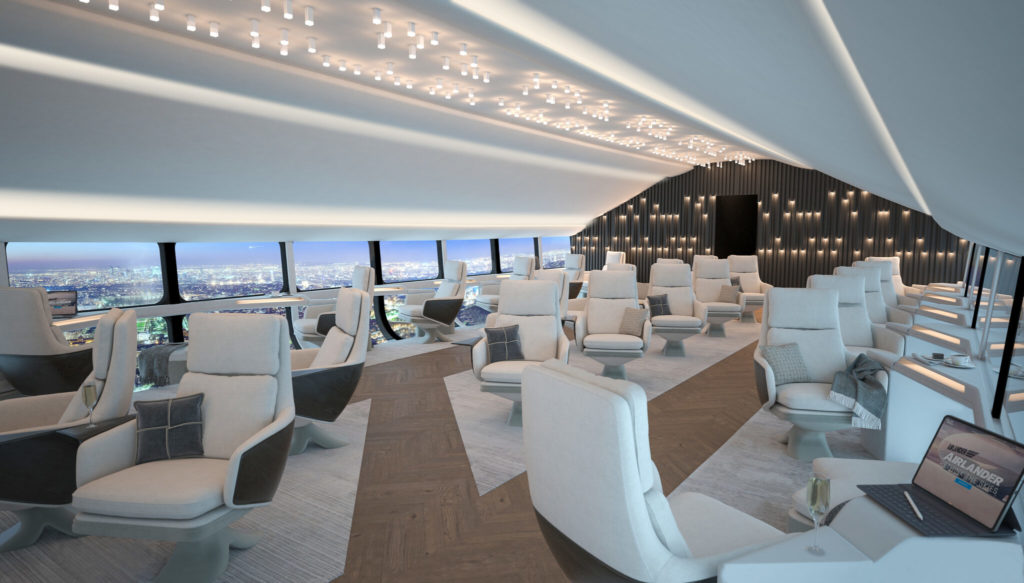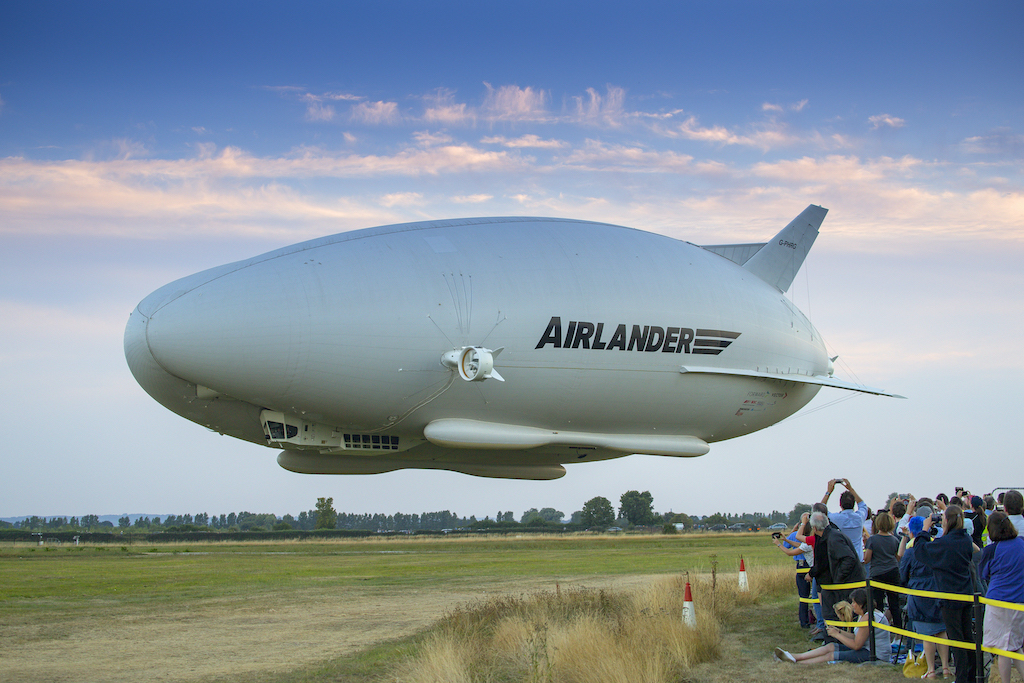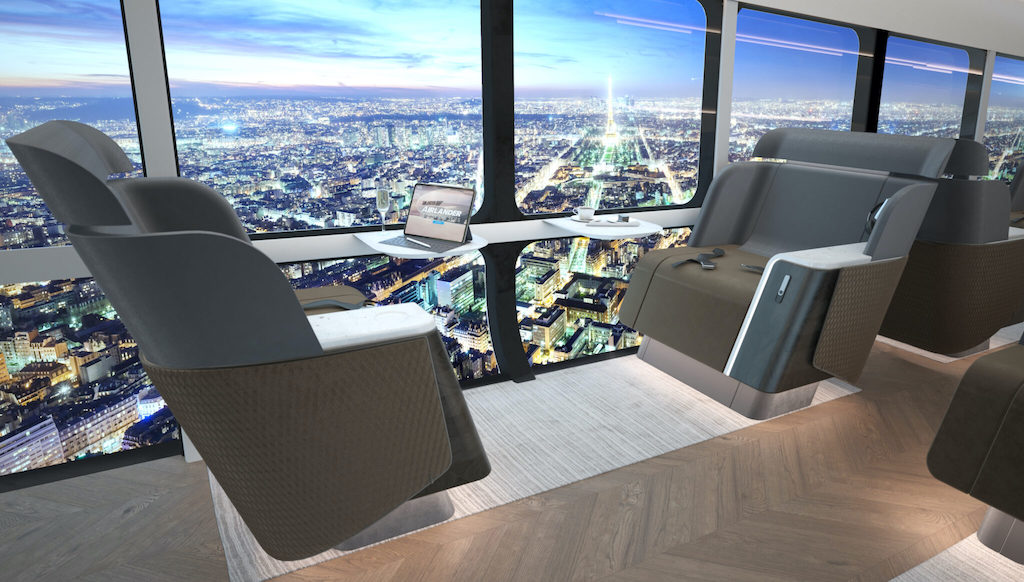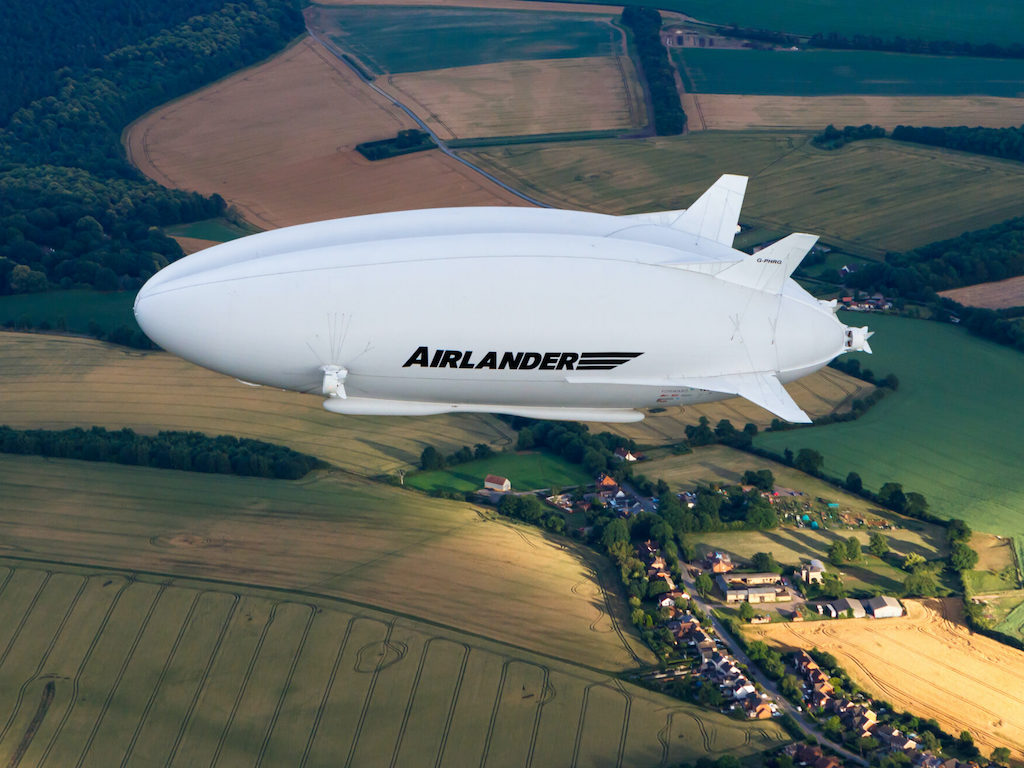4 Mins Read
Travel by air is increasingly frowned upon as awareness of the climate crisis continues to grow. But soon, conscious travellers might be able to board an alternative flight on a hybrid aircraft that releases 90% less emissions than conventional planes and offers incredible views with floor-to-ceiling windows.
British firm Hybrid Air Vehicles (HAV) recently revealed new details about its airship, the Airlander 10, which will seat up to 100 passengers and boasts a far smaller footprint than current passenger planes on the market. The cabin is spacious, allowing every person on board with direct aisle access and a chance to appreciate the view from above with its floor-to-ceiling windows.
Operating from 2025 with a hybrid-electric configuration, the company claims that the aircraft means a 90% reduction in greenhouse gas emissions compared to conventional planes in similar roles. By 2030, HAV says the plane will be entirely powered by electricity and be emissions-free.

On Airlander, the whole experience is pleasant, even enjoyable. And in the hybrid-electric and future all-electric configurations, Airlander is fit for our decarbonised future.
HAV
“For many decades flying from A to B has meant sitting in a metal tube with tiny windows – a necessity but not always a pleasure,” said commercial business development director George Land, in an announcement.
“On Airlander, the whole experience is pleasant, even enjoyable. And in the hybrid-electric and future all-electric configurations, Airlander is fit for our decarbonised future.”
HAV says that its aircraft will be particularly suited for inter-city travel, which currently represents 40% of the forecasted air mobility market by 2050.
While it won’t be operating with 100% electricity at launch, the company believes that it still offers a much more carbon-friendly alternative to clamp down on the emissions caused by air travel.

Globally, the aviation industry is responsible for 12% of overall transportation emissions, and around 2% of the total human-caused emissions – which might not seem like a large percentage, but climate scientists have urged innovation in all sectors will be necessary to keep temperature rise down as outlined in the Paris agreement.
Air travel is also at the crux of climate inequality, with a small minority of elite frequent flyers responsible for the bulk of aviation emissions, while poorer communities are left behind to suffer the worst impacts of climate change.
HAV claims that until it reaches net-zero planes by 2030, its hybrid aircraft will still offer environmental advantages because of its “inherently efficient” design.
When it takes off in 2025, it will be fitted with four high-efficiency combustion engines that combined with Airlander’s technology that enables a “buoyant lift from helium with aerodynamic lift and vectored thrust” will mean a significant reduction emissions by at least 75% compared to existing fixed wing aircrafts.

This will give future customers the option for a zero-emissions aircraft.
HAV
Unlike conventional airplanes, Airlander can adopt hydrogen fuel cells quickly once the technology has been developed. This is because the design incorporates extra space to store the required hydrogen, which will make zero-emissions flights possible as soon as possible.
European aircraft maker Airbus is also looking to make hydrogen aircrafts possible, recently releasing three designs to make zero-emission commercial planes a reality. Airbus has put the timeline for launch by 2035, five years later than the end-of-decade deadline HAV has set.
“In time, all four of Airlander 10’s engines will be electric,” the company says. “This will give future customers the option for a zero-emissions aircraft.”
All images courtesy of HAV.




